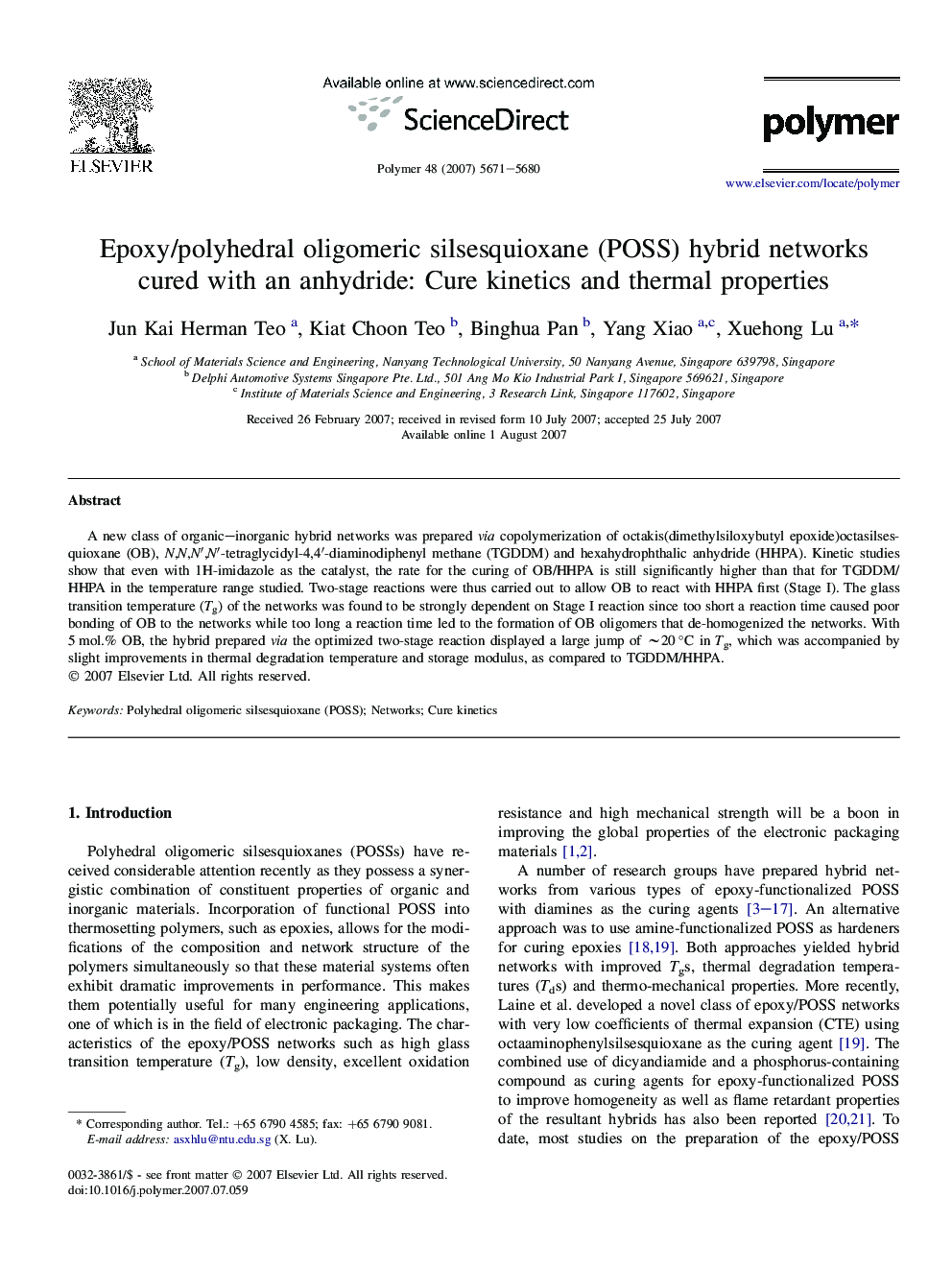| Article ID | Journal | Published Year | Pages | File Type |
|---|---|---|---|---|
| 5189713 | Polymer | 2007 | 10 Pages |
Abstract
A new class of organic-inorganic hybrid networks was prepared via copolymerization of octakis(dimethylsiloxybutyl epoxide)octasilsesquioxane (OB), N,N,Nâ²,Nâ²-tetraglycidyl-4,4â²-diaminodiphenyl methane (TGDDM) and hexahydrophthalic anhydride (HHPA). Kinetic studies show that even with 1H-imidazole as the catalyst, the rate for the curing of OB/HHPA is still significantly higher than that for TGDDM/HHPA in the temperature range studied. Two-stage reactions were thus carried out to allow OB to react with HHPA first (Stage I). The glass transition temperature (Tg) of the networks was found to be strongly dependent on Stage I reaction since too short a reaction time caused poor bonding of OB to the networks while too long a reaction time led to the formation of OB oligomers that de-homogenized the networks. With 5 mol.% OB, the hybrid prepared via the optimized two-stage reaction displayed a large jump of â¼20 °C in Tg, which was accompanied by slight improvements in thermal degradation temperature and storage modulus, as compared to TGDDM/HHPA.
Related Topics
Physical Sciences and Engineering
Chemistry
Organic Chemistry
Authors
Jun Kai Herman Teo, Kiat Choon Teo, Binghua Pan, Yang Xiao, Xuehong Lu,
